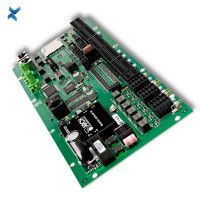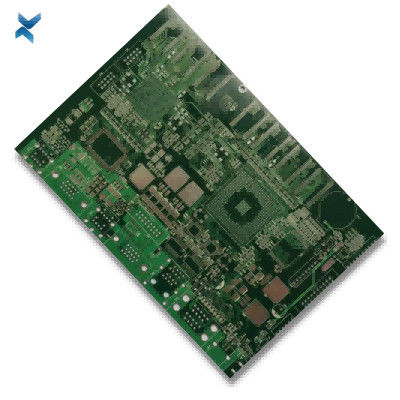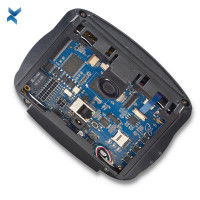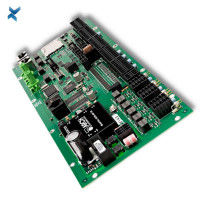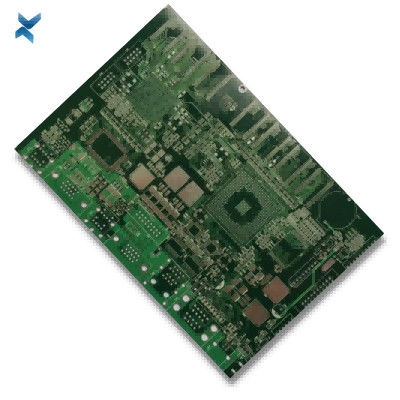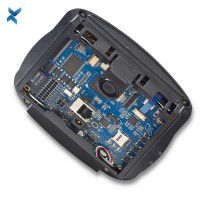OEM ODM PCBA Circuit Board Assembly For Transmission Controls
| Place of Origin | Shenzhen |
|---|---|
| Brand Name | YScircuit |
| Certification | ISO9001,UL,REACH, RoHS |
| Model Number | YS-PCBA-0016 |
| Minimum Order Quantity | 1 piece |
| Price | 0.17-9$/piece |
| Packaging Details | Foam cotton + carton + strap |
| Delivery Time | 2-8 days |
| Payment Terms | T/T,PayPal, Alibaba pay |
| Supply Ability | 251,000 square meter/year |

Contact me for free samples and coupons.
Whatsapp:0086 18588475571
Wechat: 0086 18588475571
Skype: sales10@aixton.com
If you have any concern, we provide 24-hour online help.
x| Material | FR4+Component Parts | Size | According To Customer Request |
|---|---|---|---|
| Process | Immersion Gold And Sliver | Surface Finishing | HASL/HASL-LF/ENIG/OSP |
| Product Name | Transmission Controls PCBA | Application | Transmission Controls |
| Base Material | FR-4 | Copper Thickness | 3OZ |
| High Light | ODM PCBA Circuit Board Assembly,RoHS PCBA Circuit Board Assembly,ODM PCB PCBA Assembly |
||
OEM ODM PCBA Circuit Board Assembly For Transmission Controls
PCBA Assembly ODM Printed Circuit Board For Transmission Controls
Manufacturing process of PCBA in details:
1. Solder Paste Stenciling
First and foremost, the PCBA company applies a solder paste to the printed circuit board. In this process, you need to put solder paste on certain portions of the board. That portion holds different components.
The solder paste is a composition of different tiny metal balls. And, the most-used substance in the solder paste is tin i.e. 96.5%. Other substances of solder paste are silver and copper with 3% and 0.5% quantity respectively.
The manufacturer mixes paste with a flux. Because flux is a chemical that helps solder in melting and bonding to the board surface. You must apply solder paste at the precise spots and in the right amounts. The manufacturer uses different applicators for spreading paste in the intended locations.
2. Pick and Place
After the successful completion of the first step, the pick and place machine has to do the next job. In this process, manufacturers place different electronic components and SMDs on a circuit board. Nowadays, SMDs are accountable for non-connector components of boards. You will learn how to solder these SMDs on the board in the upcoming steps.
You can use either traditional or automated methods to pick and place electronic components on the boards. In the traditional method, manufacturers use a pair of tweezers to place components on the board. Contrary to this, machines place components on the right position in the automated method.
3. Reflow Soldering
After placing the components in the right place, manufacturers solidify the solder paste. They can accomplish this task through a “reflow” process. In this process, the manufacturing team sends the boards to a conveyor belt.
The conveyor belt has to pass from a large reflow oven. And, the reflow oven is almost similar to a pizza oven. The oven contains a couple of heaters with different temperatures. Then, the heaters heat the boards at different temperatures to 250o C. This temperature converts the solder into solder paste.
Similar to heaters, the conveyor belt then passes through a series of coolers. The coolers solidify the paste in a controlled manner. After this process, all electronic components sit on the board firmly.
4. Inspection and Quality Control
After mounting the components in the reflow process, you need to inspect the board for flaws. In this process, manufacturers also test for the functionalities of the board. During the reflow process, many boards come with poor connections or become short. In simple words, there can occur a lot of connection problems during the previous step.
So there are different ways to check the circuit board for misalignments and errors. Here are some remarkable methods of testing:
Manual Check
Even in the era of automated manufacturing and testing, manual checking still has significant importance. However, manual checking is most effective for small scale PCB PCBA. Therefore, this way of inspection becomes more inaccurate and impractical for large scale PCBA circuit boards.
Besides, looking at the miner components for so long is irritating and optical fatigue. So it can lead to inaccurate inspections.
Automatic Optical Inspection
For a large batch of PCB PCBA, this method is one of the finest options for testing. In this way, AN AOI machine inspects PCBs using plenty of high-powered cameras.
These cameras cover all angles to inspect different solder connections. AOI machines recognize connections’ strength by the reflecting light from solder connections. The AOI machines can test hundreds of boards in a couple of hours.
X-Ray Inspection
It is another method for board testing. This method is less common but more effective for complex or layered circuit boards. The X-ray helps manufacturers to examine lower-layer problems.
Using the aforementioned methods, if a problem exists, the manufacturing team either sends that back for reworking or scrapping.
If the inspection finds no mistake, the next step is to check its workability. It means testers will check if it works as the requirements or not. So the board might need calibration to test its functionalities.
5. Insertion of Through-Hole Component
The electronic components vary from board to board depending on the type of PCBA. For example, the boards might have different types of PTH components.
Plated through-holes are different types of the hole in the circuit boards. By using these holes, components on circuit boards pass the signal to and from different layers. PTH components need special types of soldering methods instead of using only paste.
Manual Soldering
This process is very simple and straightforward. At a single station, one person can easily insert one component into an appropriate PTH. Then, the person will pass that board to the next station. There will be many stations. At each station, a person will insert a new component.
The cycle continues until all components are installed. So this process can be lengthy that depends on the number of PTH components.
Wave Soldering
It is an automated way of soldering. However, the process of soldering is completely different in this technique. In this method, the boards pass through an oven after putting on a conveyor belt. The oven contains molten solder. And, the molten solder washes the circuit board. However, this type of soldering is almost not practicable for double-sided circuit boards.
6. Testing and Final Inspection
After the completion of the soldering process, PCBAs pass through the final inspection. At any stage, manufacturers can pass circuit boards from the previous steps for the installation of additional parts.
Functional testing is the most common term used for the final inspection. In this step, testers put the circuit boards through their paces. Besides, testers test the boards under the same circumstances in which the circuit will operate.
For example, testers test the board on different voltages, signals, and currents. If boards show fluctuation or unwanted behavior, the circuit boards fail the test. So manufacturers can recycle or scrape the circuit boards.
| Capability | Standard |
| Certifications: | ISO 9001: 2015, AS 9100 Rev D, ISO 13485: 2016 |
| Lead Time: | 1-5 Days, As per the scheduled period |
| Parts procurement: | Full Turnkey, Partial Turnkey, and Knitted |
| Assembly Types: | Surface Mount (SMT), Thru-hole, Mixed Technology, Single and double-sided SMT/PTH. |
| Stencils: | Laser cut stainless steel and Nano-coating |
| Components: | Passive components smallest size 0201, Fine pitch components smallest size 8 Mils pitch. |
| Component packaging: | Reels, Cut Tape, Tube, and lose parts. |
| Inspection: | X-ray analysis, AOI, and Microscope to 20X |
| Solder Type: | Leaded and Lead-free/ RoHS compliant |
| Assembly Surface mount connectors: | Yes |
| Wave Soldering: | Yes |
| PCB Finish: | SMOB/HASL, Electrolytic gold, Electroless gold, Electroless silver, Immersion gold, Immersion gold, Immersion tin, and OSP. |
| Panelized PCB: | Tab routed, Breakaway tabs, V-scored and Routed + V scored |
| Rework: | BGA removal and replacement station, SMT IR rework station, and Thru-hole reworks station. |
| Design file format: | Gerber RS-27, 274D, Eagle and Auto CAD's DXF, DWG BOM, and Pick and place a file |
| layer/m² | S<1㎡ | S<3㎡ | S<6㎡ | S<10㎡ | S<13㎡ | S<16㎡ | S<20㎡ | S<30㎡ | S<40㎡ | S<50㎡ | S<65㎡ | S<85㎡ | S<100㎡ |
| 1L | 4wds | 6wds | 7wds | 7wds | 9wds | 9wds | 10wds | 10wds | 10wds | 12wds | 14wds | 15wds | 16wds |
| 2L | 4wds | 6wds | 9wds | 9wds | 11wds | 12wds | 13wds | 13wds | 15wds | 15wds | 15wds | 15wds | 18wds |
| 4L | 6wds | 8wds | 12wds | 12wds | 14wds | 14wds | 14wds | 14wds | 15wds | 20wds | 25wds | 25wds | 28wds |
| 6L | 7wds | 9wds | 13wds | 13wds | 17wds | 18wds | 20wds | 22wds | 24wds | 25wds | 26wds | 28wds | 30wds |
| 8L | 9wds | 12wds | 15wds | 18wds | 20wds | 20wds | 22wds | 24wds | 26wds | 27wds | 28wds | 30wds | 30wds |
| 10L | 10wds | 13wds | 17wds | 18wds | 20wds | 20wds | 22wds | 24wds | 26wds | 27wds | 28wds | 30wds | 30wds |
| 12L | 10wds | 15wds | 17wds | 18wds | 20wds | 20wds | 22wds | 24wds | 26wds | 27wds | 28wds | 30wds | 30wds |
| 14L | 10wds | 16wds | 17wds | 18wds | 20wds | 20wds | 22wds | 24wds | 26wds | 27wds | 28wds | 30wds | 30wds |
| 16L | 10wds | 16wds | 17wds | 18wds | 20wds | 20wds | 22wds | 24wds | 26wds | 27wds | 28wds | 30wds | 30wds |
![]()
![]()
![]()
![]()
![]()
FQA
Q: How fast can you manufacture my PCBs?
A: We have a 24 hour turnaround time for some PCB requirements. Please submit your Gerber files or contact us to learn more about our expedited PCB services.
Q: What file format do you accept for quoting?
A: You can use any PCB design software that you want, however, it needs to be able to export Gerber RS-274X and NC Drill files. Please .zip all of your files together (include readme).
Q: Do you ship PCBs internationally?
A: Yes, we have many customers from around the world that rely on YScircuit to manufacture their PCBs.
Q: Whether all PCBAs will be tested before delivery?
A: Yes, we will test each piece of PCBA product under your testing methods, to ensure quality and functionality.
Q: How long has your company been?
A: Our company established in the year 2005,we’re focus on PCB and PCBA service with more than 10 years.
The factory has gotten ISO9001:2008,ISO14001:2004 certificates.With 350 experienced staff in our factory.




